Jesus and the Crucifixion: Unsolved Mystery
Introduction:
A young Jewish man performed such miracles in his lifetime that the entire world went crazy behind him. Jesus, also known as the Prophet and Messiah, taught people to follow the true way of God without caring for their own lives. But in the end, the Messiah was crucified. Jesus always called himself the ‘Son of God’. What happened to Jesus after the crucifixion? Or did God call his beloved son to heaven? Did Jesus have any connection with India? Or did Jesus live in India after the crucifixion?
If we look at it, there are many different interpretations of Jesus’ death. One of the most popular stories is that Jesus didn’t die in Jerusalem. He died in Kashmir, India. It is said that Jesus was alive after the Crucifixion, and he disappeared after 3 days.
He then reached Kashmir, where he spent his final days. Some people may deny this claim, but historians, authors, and research documentaries have repeatedly proven this story with new evidence.
In this blog, I will analyze the mystery of Jesus and the crucifixion.
What happened with Jesus after the crucifixion?
The story begins when Jesus was crucified by Roman soldiers in Jerusalem. He was crucified on the cross but mysteriously disappeared after 3 days. As per the Bible’s ‘The Gospel of Luke,’ (Luke 24:5-6) Jesus was Resurrected 3 days after his crucifixion, which most Christians refer to as “The Resurrection”.
All researchers around the world agree on one thing, that Jesus did not die from being hung on a cross. It’s also a fact of science that a person cannot die immediately from being nailed with three nails. It was a punishment for torturing and slowly killing criminals. That’s why researchers continue to deny that Jesus died on the cross.
The Christian belief system also says that Jesus lived after the Crucifixion. However, what happened after the crucifixion with Jesus is not known in the Bible.
Where he disappeared is still a mystery. And there is no mention of ‘India’ in Christianity.
As per the belief, Jesus neither went to heaven nor was resurrected, But he somehow managed to escape from the cross. Then he took refuge in the mountains from time to time in unknown places. The Bible doesn’t divulge the name or location of his hiding.
Today we will decode this mystery.
Why is this another “Lost Years of Jesus”?
The Bible-New Testament doesn’t mention Jesus’ childhood from 13 to 30 years old. This is the age when a child’s spiritual education begins. At this age, a curious child seeks a spiritual Master who can teach him the “Truth”. The history of Jesus’ childhood is still a mystery. This is known as the “missing years of Jesus” or the “Lost years of Jesus“.
If we say in other words, there is no mention of these 18 years in the Bible.
What happened to Jesus after he was crucified? The Bible doesn’t answer this question, just like it doesn’t say anything about the “lost years of Jesus”. But curiosity about this question has always existed in the Christian world.
Researchers and historians traveled all over Europe and the Middle East in search of an answer, but it was in India in the 19th century that they found a satisfying response.
Since then, scholars have written numerous books on this subject, based on their research, facts, and historical evidence. There have been many attempts to hide and suppress this truth, but now in the age of social media it has resurfaced and people are talking about it again.
Who started this discussion Internationally?
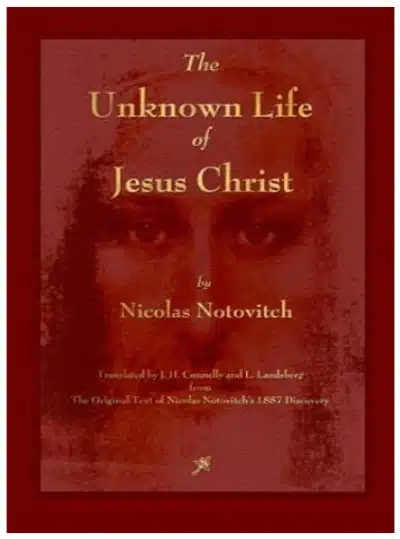
The story of Jesus coming to India gained international attention when Russian Jewish scholar Nicolas Notovich, who later converted to Christianity, visited India. In 1894, he expressed the possibility that Jesus had come to India.
This is because Nicolas Notovich had visited India multiple times and had stayed as a guest in a Buddhist monastery near Ladakh. There, a Buddhist monk told him about a bodhisattva saint named Isa.
Nicolas discovered that there was a remarkable similarity between the Buddhist monk Isa and Jesus. Nicolas further reveals that he found a manuscript in that Buddhist monastery and translated it into Russian.
Later, he published it in France under the title “The Unknown Life of Jesus Christ.”

In his book, Nicolas explains that the Christian world outright rejected his findings, but privately Vatican officials admitted that they have 63 documents that showed Jesus had come to India and lived there. But for religious reasons, they kept it a secret.
The British government did not take much time to suppress this secret as India was under British rule during that time. However, Nicolas Notovich’s book certainly aroused curiosity in the world to know the truth.
In 1922, the Hindu saint Swami Abhedananda arrived at the Buddha Monastery and conducted a study of a manuscript written in the Pali language.
He also translated it into English, which he mentioned in his book “Journey into Kashmir and Tibet“.
What is Jesus’ connection with India?
Renowned philosopher Osho has also recognized the connection between Jesus and India. He said that whenever someone thirsts for enlightenment and truth, he runs towards India.
By that time, 500 years had passed since Buddha died in India. However, Buddhism was a very famous religion in India. Buddha had established such a vast Buddhist philosophy that it had spread the entire South Asia.
It is said that during these 18 years (missing years of Jesus), Jesus spent time with Buddhist monks in India, Nepal, and Tibet, where he learned knowledge and enlightenment from Buddha’s teachings. Maybe that’s why Jesus’ teachings also emphasize love, compassion, and kindness, just like Buddha did.
Evidence of Jesus in India after the Crucifixion:
But every time they attempted to uncover this mystery; the answer was always Kashmir in India. To understand this, watch BBC’s report written by Sam Miller in 2010.
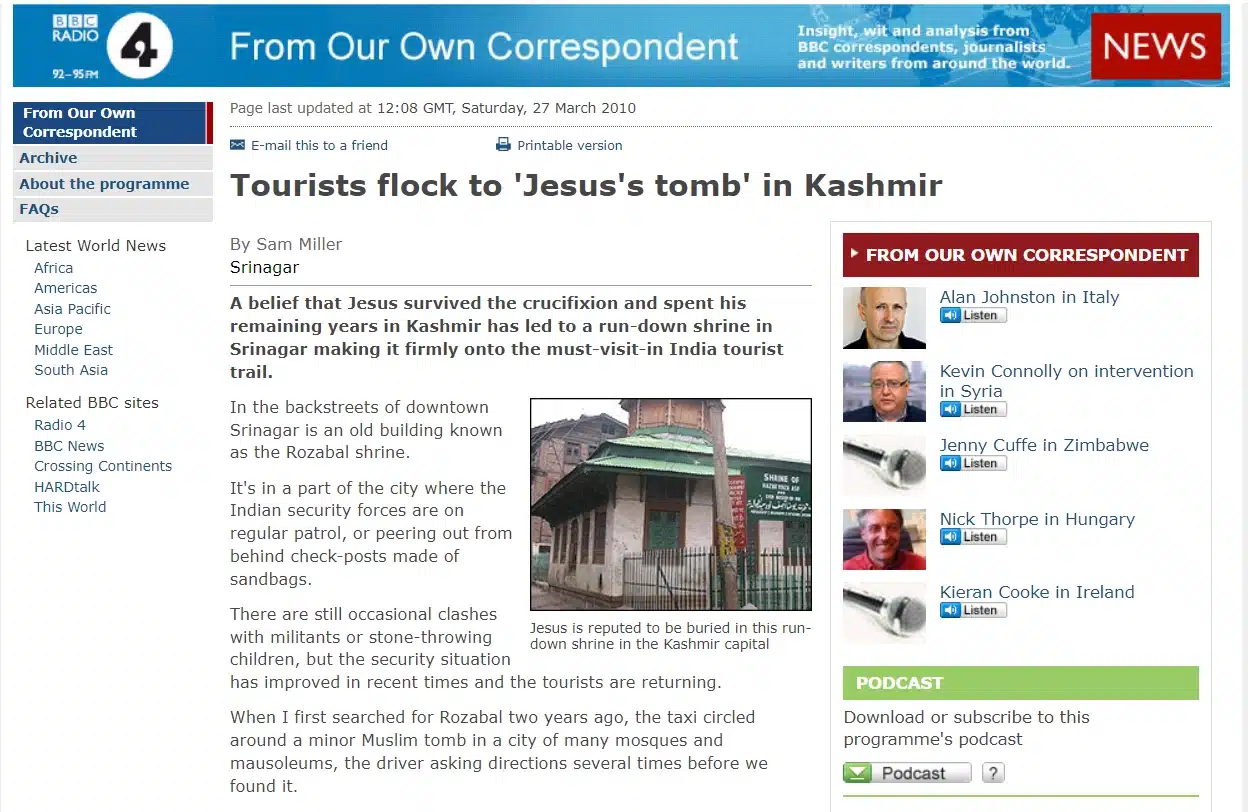
According to this report, outside of Srinagar, Kashmir, there is a shrine called ‘Roza Bal’ Shrine which is believed to be the tomb of Jesus. Not only tourists from Europe and the USA but all the tourists visiting Kashmir are keen to visit Srinagar to see the Tomb of Jesus.
It is said that Jesus was buried in this shrine after his death and this tomb is still present today. This tomb is said to be 2000 years old.
In this report, Miller writes that this Shrine is an old building and very few people knew about it before, but now the majority of people want to visit it.
The word “Roza Bal” comes from the Kashmiri word “Rouza Bal, or Rozabal” meaning “the tomb of the Prophet”.
Watch the Grave of Jesus at Roza Bal in Kashmir:
Then who was the Yuz Asaf and what was his relation to Jesus Christ?
It is a well-established fact that the person whose shrine is in Rozabal is named Youza Asaph. Researchers believe that “Youza Asaph” is none other than “Jesus Christ”.
The first historian of Kashmir, Mulla Nadiri has told in his book “Tareekh-E-Kasmir” (History of Kasmir) that between 49 AD and 109 AD, Hazrat Yuz Asaf came to Kashmir from ‘Bait-Ul-Muqaddas’ during the days of King Gopadatta. ‘Bait-Ul-Muqaddas’ is today Philistine.
It is said that Yuz Asaf called himself a Prophet in the Kasmir Velly and dedicated himself to the worship of God. You can also refer to Wikipedia to understand Tareekh-E-Kashmir.
This person was Jesus Christ who later assumed the name of Yuz Asaf.
A famous poet of Akbar’s court Abul Fazal Faizi who wrote the book “Akbarnama” also referred to Jesus as Yuz Aasaf.
So, it is possible that Jesus came to Kasmir from his native land and used the name Yuz Asaf to hide himself from the enemy.
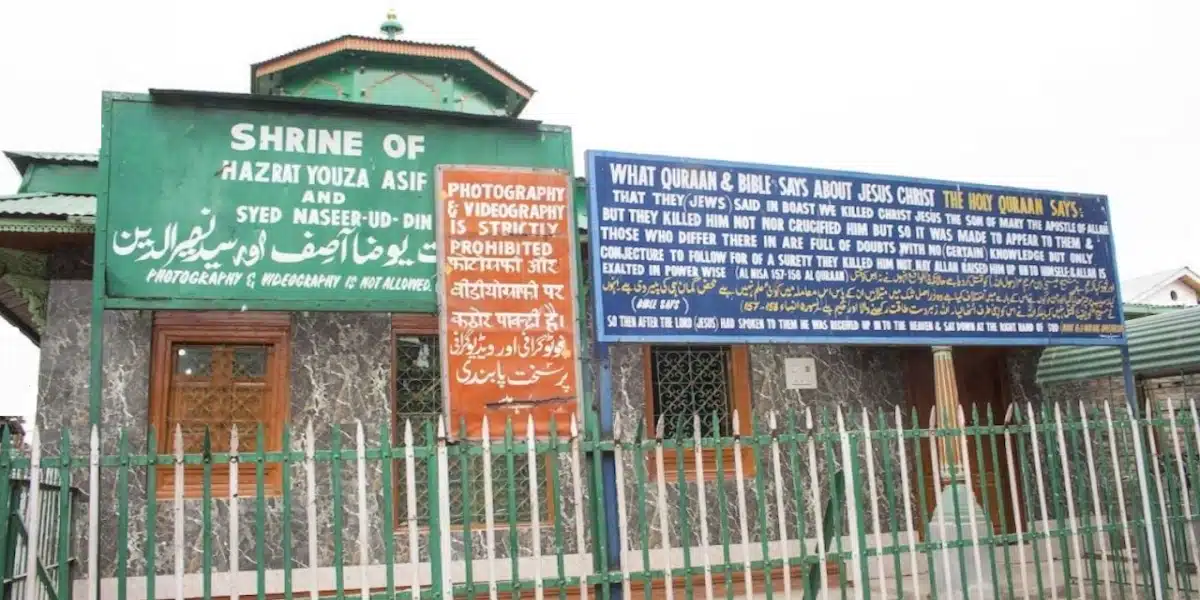
Other evidence of Jesus’ presence in India after the Crucifixion:
-
BBC Documentary report on “Jesus In India”
The first documentary made by BBC London on “Jesus in India” sparked the theory.
It attracted people’s attention to this mystery.
Watch “Jesus In India” BBC Documentary:
2. BBC Documentary on Jesus as a ‘Buddhist Monk of Kasmir’
Further, BBC did some research and made another documentary called “Jesus Was a Buddhist Monk“.
BBC documentary that explores a wide range of ideas around the question of Jesus’ death. It explores these ideas until the 25th minute of the documentary, where the analysis of ideas takes on a much more logical and grounded tone, leading to surprising findings.
The three wise men were Buddhist monks who visited Jesus at the time of birth. And came back for him around the age of 12 years old. After that, he was educated in a Buddhist monastery and taught Buddhist philosophy.
Later Jesus returned to his native place at the age of 30. This theory proves the “Missing years of Jesus” from Bible texts.
When he was crucified, but somehow managed to escape to Kashmir, Afghanistan, Tibbat region where he died as an 80-year-old man.
Watch “Jesus Was a Buddhist Monk” BBC Documentary:
3. Govt of India’s Documentary on Jesus in Kashmir
According to an official document of the Government of India, Jesus stayed in India and learned the teachings of Buddhism. Jesus died in Kashmir when he was 80 years old.
2000-year-old ancient manuscripts, Sanskrit and Buddhist inscriptions, ancient coins of King Kanishk, and other authentic archaeological evidence have been presented as proof of this.
watch Govt of India’s Documentary on Jesus in Kashmir!
4. Archeologist Fida Hassnain and Dahan Levi’s book: “The Fifth Gospels”
When the former director of the Jammu & Kashmir Archaeology Research Archive Department, Fida Hassnain (1924-2016), visited Ladakh in 1965, he came across a document in a Buddhist monastery that sparked his interest in this field. After that, he started searching for ancient manuscripts and documents in the Kashmir state.
Then, Fida Hassannain met the Historian and Founder President of the “Alliance d’ Abraham Dahan Levi. They have been researching the possibility of Jesus’ survival at the time of his crucifixion and his subsequent journeys to the East.
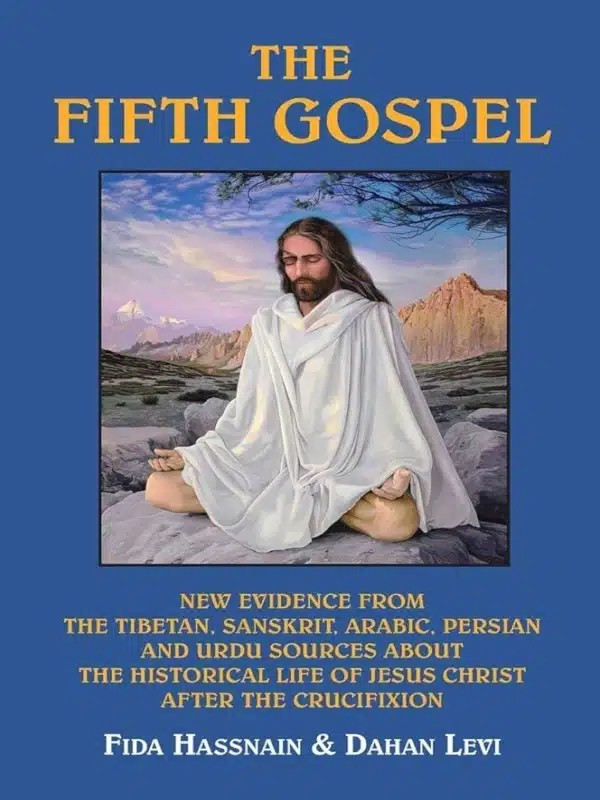
In this book, they present new evidence from Tibetan, Sanskrit, Arabic, Persian, and Urdu sources about the historical life of Jesus in India after the crucifixion.
They found that Jesus has been mentioned in ancient manuscripts by many names: Issa, Isa, Isha-Deva, Isha-Natha, Isha-Shai, Isha-Masih, Isha-Yusu, Ishu Masih, Ishu-Yuzu, Ishu-Kristo, Ishu-Asaph, Ishu-Masih, and Ishu-Yusu. In some texts, he is referred to as the Son of God. In some ancient writings, he is known as Metteyya which translates to Messiah.
This book was not written overnight but is the result of years of research on some of the most important questions about Jesus, including: Did Jesus visit India when he was 13 years old?
Did Jesus live through the crucifixion?
Was Jesus saved by his friends from the Essene tribe?
Did Jesus travel to the East, visit many different countries, and settle in Kashmir?
Through years of research and evidence, it has been proved that Jesus spent his last days in India. You can read more about this in his book, “The Fifth Gospel.”
5. Suzanne Olsson’s research on Jesus Christ’s life in India after the crucifixion:
Suzanne Olsson is an international best-selling author who gained international recognition in June 2018 for her work on Jesus Christ’s life in India after crucifixion.
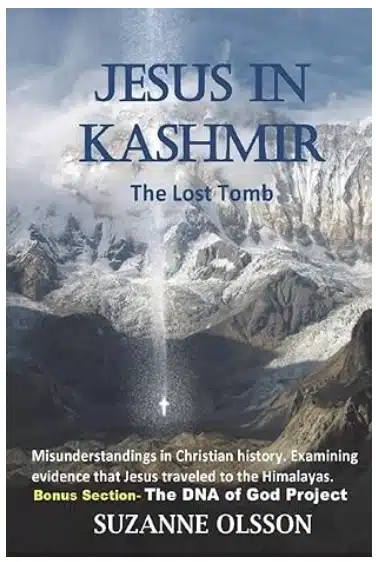
She worked with world-renowned archaeologists such as Dr. Ahmad Hassan Dani of Pakistan and Fida Hassnain of India. For 10 years, she lived in India and Pakistan, as well as war-torn Afghanistan.
During her time in India, she visited Himalayan monasteries, tombs, and other out-of-the-way places to document and classify ancient artifacts.
Locals called her “Indiana Sue” and called her “their folk hero.” She regularly appeared on local television, radio, and print media.
Her presentations are engaging and well-researched, and keep you on the edge of your seat as she uncovers previously unknown information.
And whatever she received proved that there is indeed truth in the claim that Jesus lived in India after the Crucifixion.
In addition, they discovered that the majority of the people in the Kahalgaon area of Kashmir are Muslim, and their DNA structure proves that they are descendants of Jewish people. And since Jesus was also a Jew, this DNA structure is probably possible because he came to India.
You may refer to her best-seller book for deep findings: “Jesus in Kashmir: The Lost Tomb”
6. A few more books on Jesus Christ’s life in India:
- This theory caught the attention of many people, including Faber Kaisar, who wrote a book titled “Jesus Died in Kashmir”.
- A few decades ago, the well-known Kashmiri author, Ajeej Kashmiri, wrote his book “Jesus in Kashmir: The Lost Tomb”.
- Holger Kersten also presents undeniable proof that Jesus lived and died in India. From his bestselling book: Jesus Lived in India: His Unknown Life Before and After the Crucifixion
- Ahmadiyya Muslims also believe that the tomb of Jesus is in Roza Bal. In his book “The Advent of the Promised” (1898), the founder of the Ahmadiyya community Hazrat Mirza Ghulam Ahmed said that Jesus had a wife named Marzana while visiting Kashmir and that they had children.
- James Deardorff has also done some serious research on this subject, which is available on his website: www.tjresearch.info/legends.htm.
- Maddy has also done some extensive research on this topic, which is available on his website: Jesus Christ in India?
Why the Tomb of Jesus is 2500km away from Jerusalem?
In addition to the above, many other scholars have also confirmed that the Tomb in Kashmir is indeed his tomb. However, this raises the question: If Jesus Christ was crucified in Jerusalem, why is his tomb 2500 km away from his birthplace in Kashmir?
The Bible itself has the answer to this question. The Bible shows us the evidence that Jesus Christ was alive after he was crucified. He appeared 12 times in front of people at different times and places.
So, it can be said that Jesus came to India shortly after the crucifixion.
Apart from this, in Jerusalem, he was seen alive on the cross for two days after being hanged. And after that, he disappeared.
It is said that after disappearing, he crossed Damascus and Seria, and then reached India through the famous Silk Route from present-day Iran. He lived in Kashmir till the age of 80.
What the Hindu religious scripture says on Jesus’ arrival in India:
In addition to the Bible, evidence of Jesus’ visit to India can also be found in Hindu religious scriptures. The mention of his meeting with King Shalivahan of the Kushan dynasty can be found in the Hindu religious scripture Bhavishya Purana.
Jesus mentioned in verses 22 to 32 of the 19th chapter Pratisarga parva of the Bhavishya Purana. This particular section begins with the introduction of the Salivahana dynasty (also known as Satavahana) which ruled India from the end of the 2nd century BC to the beginning of the 3rd century AD. In verse 22, King Salivahana meets a highly influential and enlightened man at present-day Mount Kailash.
The complexion of the man was golden and his clothes were white. As we know from the Gospels, Jesus used to wear white clothes. Golden color skin is often associated with divinity.
What Bhavishya Purana says about Jesus:
When asked about his introduction by the king, Jesus introduced himself as the “Son of God” or “Isa Putra”. He also speaks of his miraculous birth from a “virgin”. This is the most direct reference to Jesus Christ.
In the next verses, the saintly man continued, ”I am the expounder of the religion of the Mlecchas and I strictly uphold the absolute truth.”
Here ‘Mleccha’ means foreigners outside of the ‘Vedic Indian culture’, who generally ate meat.
Then, the surprised king asked, “What are the religious principles according to you?”
Saintly Man replied, “I, Masiha the prophet, came to the land of barbarians, where there are no rules and regulations. I took the prophethood and suffered at the hands of the savages.”
Saintly Man continued, “Having placed the eternally pure and auspicious form of the supreme lord in my heart, O protector of the planet earth, I preached these principles to those barbarians, so that my name became “Issa masiha” (Jesus the Massiah)”.
As we all know, Jesus himself was a Jew, and when he tried to teach the Romans, they subjected him to the barbaric punishment of crucifixion.
After this, in the next verses, King Salivahana greatly honored Jesus as the devoted devotee of the Lord, and this conversation ends here.
This is the only description of Jesus found in Hindu religious scriptures.
Watch, what Bhavishya Purana says about Jesus Christ’s arrival in India:
Researchers also speculate that Jesus had gone out to find “10 lost Tribes of Israelites” and during the search he reached Kashmir. On reaching here, Jesus gave his message and, in this way, Kashmir can be a promised land for Jews and Christians.
Recent Researches and Findings:
In 2007, an author and researcher named Stephen Knapp also visited Roza Bal Kashmir and Hemis Buddha Monastery. In his research findings, he discovered that the direction of the tomb in Roza Bal was not towards Mecca like most Muslims, but rather in the northeast direction, similar to the beliefs of Jews.
Another interesting fact he uncovered was that the local residents there seemed to make an effort to avoid answering certain questions or hiding something.
Stephen expressed his eagerness to visit the ancient manuscript in the Hemis Buddhist monastery in Ladakh, which is 2000 years old. However, the monastery authorities mentioned the disappearance of the manuscript. Stephen believed that maybe Vatican agents stole that manuscript.
Stephen did extensive research on the subject, you can find it on Visiting the Grave of Jesus in Srinagar, Kashmir
Bottom Line:
The ‘Roza Bal’ Tomb is located in the small locality of ‘Khaniyar’ in Srinagar. In recent years, the tomb has attracted the attention of Christians and religious historians around the world.
The Centre of Christianity, the Vatican, has consistently denied this claim. However, there are now numerous facts, research reports, and historical documents that prove that Jesus did indeed live in India after his crucifixion. It would be difficult to continue denying this for much longer.
I hope you liked this blog.
Don’t forget to share it with your loved ones on your favorite social media platforms.
We are addicted to advertising so please turn off the AD BLOCKER.
Join us in this journey of enlightenment and spiritual success.

